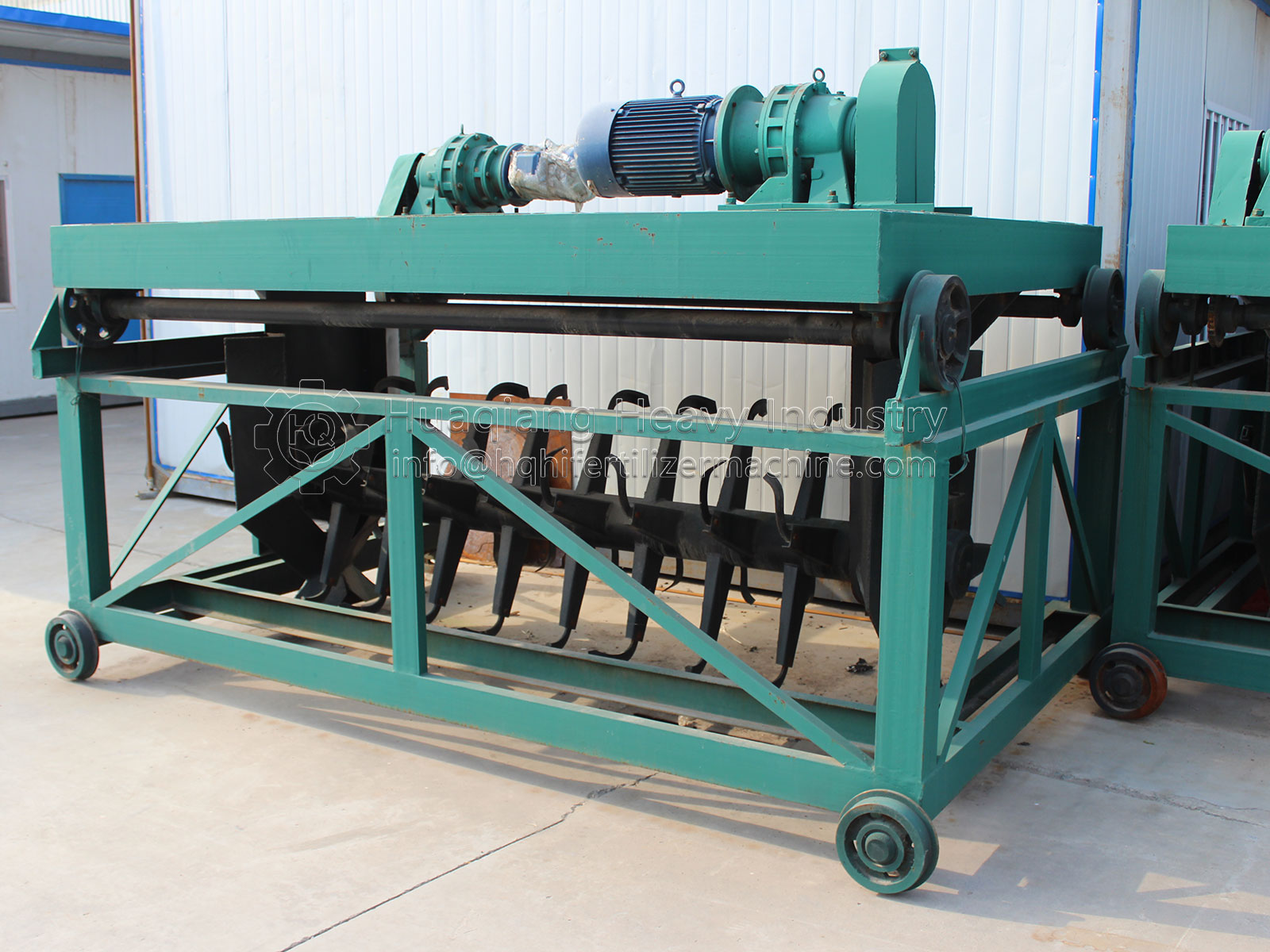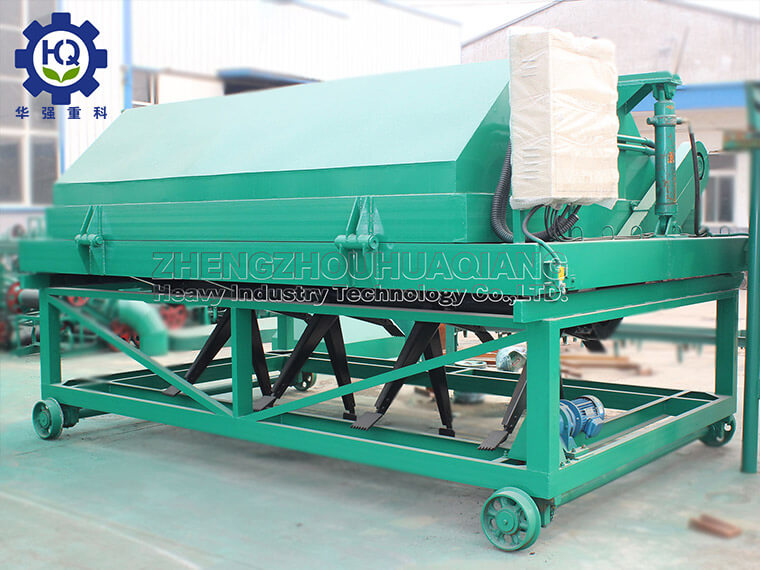Pig manure organic fertilizer chain plate compost windrow turner is suitable for aerobic composting of organic solid wastes such as livestock manure, sludge and straw.
The running system of the machine adopts frequency conversion speed regulation, good adaptability to different materials, stable operation, high stacking efficiency and deep groove operation, which can effectively shorten the fermentation period, improve the production efficiency and product quality.
Variable frequency speed control system can adapt to the change of working load.
According to the material resistance, the walking speed can be adjusted flexibly to make the organic fertilizer machine more adaptable and flexible.
Optional shifting vehicles can be used to realize the use of multi-tank equipment. If the capacity of the equipment permits, only need to build a fermentation tank to expand the scale of production and increase the value of equipment.
The hydraulic system is used to control the lifting of the working parts, which is flexible and safe.
The machine can be remotely controlled to move forward, move horizontally, flip and retreat quickly to improve the operating environment.
Optional trough type raw material distributor, automatic discharge device, solar fermentation chamber and ventilation and aeration system.
The complete set of automated organic fertilizer production equipment includes: manure dewatering machine, fermentation tipping machine, organic fertilizer crusher, organic fertilizer mixer, organic fertilizer granulator, rotary dryer, cooling machine, drum screening machine, automatic packaging machine, belt conveyor, coating machine, etc.
.jpg)
.jpg)
.jpg)
.jpg)

.jpg)

.jpg)
